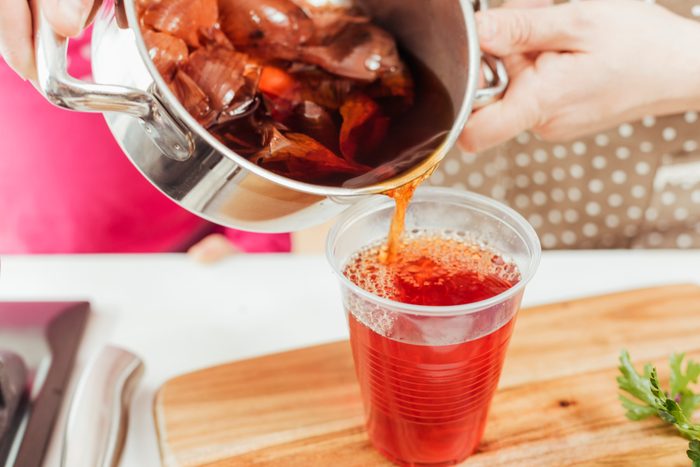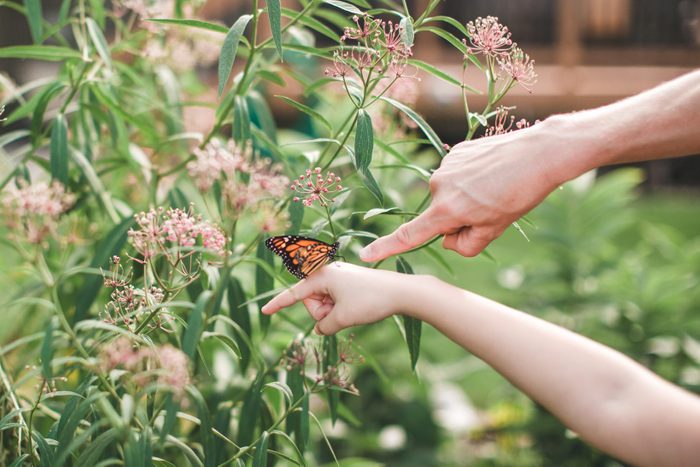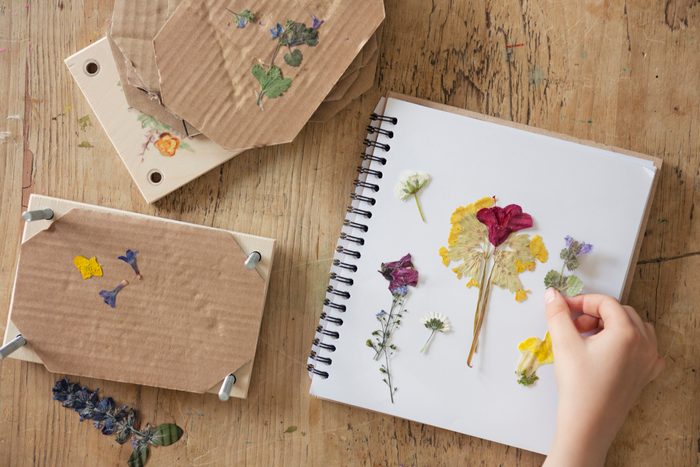From bug hunts to habitats for dinosaurs, Em Shipman from KidsGardening.org shares creative garden games and fun projects to engage kids with nature.
Fun Yard and Garden Games for Kids When School’s Out

Handmade Field Journal
Kids are constantly hearing about our changing environment. Just like scientists and journalists, they can get involved by reporting on happenings in their backyard. “Field journals can be a great tool for prompting kids to document and reflect on their own garden experiences,” says Em Shipman, executive director of KidsGardening.org.
For this activity, your child will need four to eight sheets of paper, a hole punch, yarn, scissors, a ruler and 30 minutes of your time. They’ll come away with their own garden journal.

Garden-Made Watercolors
Plants do more than just look pretty; they also make stunning colors for paints. Some of the earliest paints were crafted from flowers, seeds and roots. From spinach to sunflowers, your garden probably contains nearly every color of the rainbow.
For this project, you’ll need a large enamel or glass pot, a hot plate or stove top, distilled water, a large wooden spoon, cheesecloth, natural white clay, watercolor paper, paintbrushes and alum or cream of tartar (optional). Here’s how to harvest your plants and turn them into watercolor paints.
Afterward, don’t forget to encourage your kids use them in their handmade nature journal, to paint pictures of the flowers and vegetables they’ve helped you grow.

Bug Hunt
Watching and learning about bugs can be a gateway experience into a lifelong curiosity with the natural world, and gardens have no shortage of interesting insects.
Grab a pencil and paper (or your handmade field journal!) and see how many bugs you can find in the garden or around the park. Search high for flying insects, check flowers for pollinators and flip over some rocks to see who’s in the dirt beneath.
Take photos and document what colors the bugs are, whether they have wings, and other scientific characteristics. “Creepy crawlers aren’t always so creepy to our little ones, and they help encourage kids to maintain a sense of wonder for the natural world,” says Shipman.
P.S. Check out these building kits for kids to boost their creativity, too.

Soil Art
You can make paint from soil, just as you can from plants. Making soil art is a great excuse to get your hands dirty. The color of the paint depends on the soil’s composition, so try to get a few soil samples. You’ll also need a surface to dry your soil, something to crush it, a sieve, glue, water, cups, plates, watercolor paper and paintbrushes.

Sensory Garden
Sensory gardens contain all kinds of shapes, sizes, scents, textures, sounds and even tastes. Planting a sensory garden, or even just drawing one, can engage your little one’s imagination and help them become in tune with their surroundings. Think about plants like mint, which smells and tastes good with interesting texture. Or flowers that create a rainbow of colors.
For extra fun, add accessories like homemade wind chimes, sculptures and a bench.
“This project takes a little longer, but the rewards are invaluable,” Shipman says. “There is so much research proving the many sensory benefits of gardening for children, especially improved physical health, mental wellbeing and cognitive development.”
To plant a sensory garden, select plants of varying colors and shapes, says Elisabete Pereira, a registered behavioral technician in New Jersey. “Having areas that engage the difference senses would be fun,” Pereira says. “You could have an area for smell where the little ones could go to sniff fragrant flowers and herbs, for example.”

Dinosaur Garden
Build a garden fit for a miniature brontosaurus. Ferns and inviting broad-leaved plants make it easy to picture dinosaurs exploring your prehistoric-themed plant paradise. Besides the flora and your imagination, you’ll need gardening tools and a gardening space or container.
You’ll also need to do a little research. Find a list of suggested dinosaur-era plants here, then check which ones will thrive in your garden according to their U.S. Department of Agriculture Plant Hardiness Zones. Possibilities might include ferns, horsetails, bald cypress, cycads or palms and dawn redwood.

Fairy Garden
Here’s another imagination-driven garden project: A fairy garden or fairy house.
Try a fairy garden in a shady spot, like the base of a tree, and collect natural accessories like pine cones, rocks and flowers. You can also find lots of fun fairy garden accessories to purchase, as well as kits to get you started. Playfulness is key when creating a fairy garden.

Garden Scavenger Hunt
Who doesn’t like a treasure hunt? Create a list of items commonly seen in the garden and nature, like leaves, birds, insects and rocks. Then watch your little ones scour the garden to check items off their list.
“A scavenger hunt is perfect for any amount of free time that needs to be filled,” says Shipman. This is also a fun birthday party activity.

Pressed Flowers and Leaves
Beyond a scavenger hunt, pressed flowers keep garden memories alive and make beautiful gifts.
First, you and your child venture into the garden to collect the most intriguing and artful specimens of leaves and flowers. Then you’ll need a plant press (homemade or purchased), two plywood boards, a belt or bungee cord to bind the stack, thinned white glue or Mod Podge, heavy books or bricks for weights, and a little patience.
To press flowers, place them gently between layers of absorbent materials like parchment paper, then weigh them down heavy books or flower press for two to three weeks, Pereira says.
FAQ
Can we garden without a yard?
You can definitely garden without a yard! Container gardening, rooftop or utilizing spaces like window sills, balconies and patios are all ways to plant a garden without a yard.
How do I keep gardening fun for children?
Keep the children engaged in gardening by allowing them to help care for the plants. Give them a watering schedule or allow them to help pick vegetables when they are ready. You could also help them engage with their senses by planting a sensory garden or doing crafts with fresh flowers.
About the Experts
Em Shipman is the executive director of KidsGardening.org.
Elisabete Pereira is a registered behavioral technician in New Jersey.



















